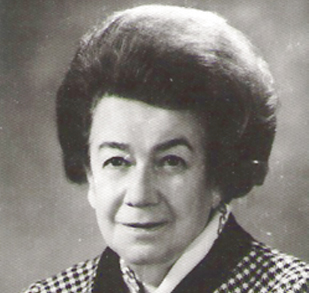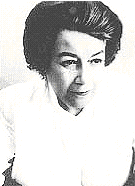Longevity Centres - Aslan Therapy - Protocol
(713) 522-4037
Denver Office(303) 900-3351

ASLAN Protocol
Indications: Desire to be active and to live, better memory, enhanced concentration abitity and attention, improved optimism
Contains: Gerovial-H3
The Original Anti-Aging Physician
 WHO WAS ANNA ASLAN?
WHO WAS ANNA ASLAN?
Anna Aslan is renowned for her essential contribution to gerontological research as well as for having patterned the best geriatric treatment influencing the aging process. Anna Aslan was the first person to rule out the fatalistic approach to aging, providing a new method in gerontology by opening the way to the prevention and treatment of old age.
“Anna Aslan’s life can be seen in her work. She battled courageous fights, all for the service of good, to make man’s dream to live with dignity for as long as possible. Now we celebrate the inventor, the scientist, the physician, and the professor. For many years, she has led us as the first Institute of Gerontology in the world. Anna Aslan is the Ambassador of Gerontology and a brilliant woman. She had a special empathy for the elderly and has always fought to improve their condition all over the world. She worked with others to initiate the General Assembly of the United Nations Organization on aging, held in Vienna, 1983. Dr. Aslan declared a “war on aging and old age”. She was the first to show that Gerontology or Anti-Aging medicine have enough possibilities to slow down the aging process and to delay old age onset. Old age can be a period of pain, loneliness and disease, with high medical cost and social complexity. Aging rhythm can be normal, accelerated, or delayed. “To grow old in a beautiful and dignified way is at the same time a science and an art”
DR ASLAN’S PROTOCOL INDICATIONS
-
Moderate and light depressive states
-
Troubles concerning attention, concentrating, cognitive processes and in balancing the neurovegative states
-
Chronic Fatigue Syndrome
-
Sleep Disorders
-
Skin dystrophies, trophic ulcers, atonic wounds
-
Osteoarthritis, degenerating rheumatism, osteoporosis and during fracture consolidation periods
-
Sexual management and improving sex drive
-
Due to the inhibition on the generation of the superoxide radical, the protocol provides a powerful antioxidant effect
OUTCOME OF TREATMENT
-
Desire to be active and to live, better memory, enhanced concentration ability and attention, improved optimism
-
Improved affective and vegetative balance
-
Increased self-caring abilities and exercise capacity
-
More ability to cope with the environment and increased resistance to infections
-
Balance of endocrine functions with estrogen reappearance and androgen reactivation
-
Improved visual, auditory and olfactory acuity
-
Diminished extra-pyramidal rigidity, improved gait and increased mobility
-
Better skin, nails and mucous membranes
-
Hair growth stimulation with a tendency to repigmentation
-
Better blood vessel reactivity
-
Improved Quality of Life
-
Improved Sex Drive
PREVENTATIVE
Treatment of chronic diseases and aging consists of 4 courses of 12 injections and 4 courses of 24 pills, i.e.: one course of 12 injections over 4 weeks (i.e.: 3 injections per week), a 4-week break then one course of 24 pills over 12 days (one pill twice daily between meals), a 2-week break and then the cycle is resumed.
Starting from the age of 40 years, the prophylactic treatment with pills only is recommended in a series of 25 tablets during the first 12 days, with an interval of 2 months.
1st day, 1 tablet/day, 2-hours after breakfast, increasing to the 12th day when 2 tablets per day are taken (again 2-hours after meals, for example one at 10AM and another at 4PM).
There should be a series of 5 treatment courses in the year, which should be increased to 6 per year for persons over the age of 65.
CURATIVE
Treatment in chronic diseases requires 6 courses of 12 injections, and 5 courses of 24 pills, yearly, i.e.: one course of 12 injections over 4 weeks, a 2-week break, one course of 24 pills over 12 days (one pill twice daily between the meals); 2 week break. The cycle is then resumed.
Depending upon the outcomes the physician and patients can either shorten or extend the breaks. The first and second course of injections can be administered daily in order to study the individual reactivity. The treatment can be individualized according to the disease / diseases accompanying the aging and the patient’s biological age.
In arteritis the route of administration is intra-arterial. Aslan recommended the intra-arterial route in arthrosis and arthritis, especially when the knee joint is involved, and the intravenous route for cerebral spasms.
INGREDIENTS
Procaine Hydrochloride 10mg
Benzoic Acid 0.6mg
Potassium Metabisulfite 0.5 mg
Disodium Phosphate 0.05mg